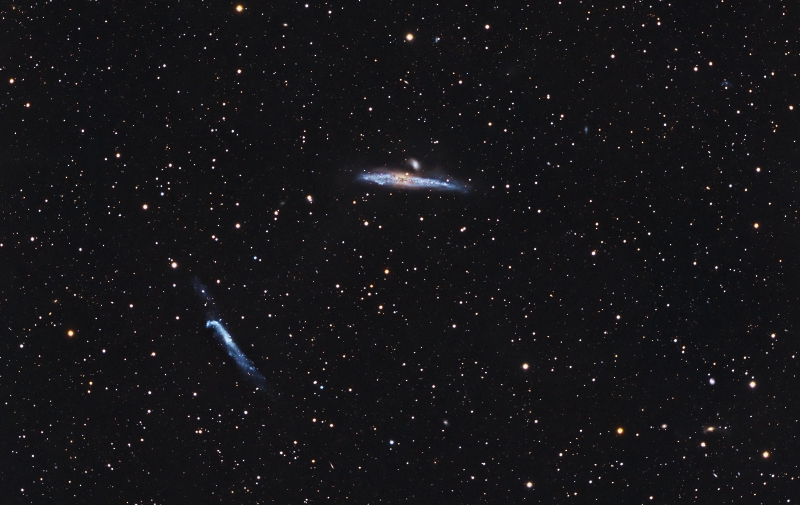NGC 4631, NGC 4627 and NGC 4656/57 (Jon Talbot)
NGC 4631 is a SB class barred edge-on spiral galaxy witha slightly distorted wedge shape giving it the appearance of a whale, thus giving the galaxy its nickname.
The Whale Galaxy was discovered in 1787 by William Herschel. Astronomers have estimated that NGC 4631 is only 25 million light-years awayand is of similar size to our Milky Way galaxy. NGC 4631 has a recessional velocity of 605 km/sec that is too small to be a reliable indicator of distance, because of the possibility of significant peculiar (non-Hubble-expansion) velocities. However, its distance based on that recessional velocity (about 27 million light years away) is in reasonable agreement with redshift-independent distance estimates of 18 to 24 million light years. In larger telescopes than an 8”, a small companion E4 elliptical galaxy NGC 4627 can be seen nearby the Whale Galaxy, making this a Cosmic Duet for larger (16”+) telescopes.
NGC 4656 is a large Sb spiral galaxy discovered by William Herschel in 1787.Why the two NGC designations? The bright knot on the East of this galaxy has been assigned the separate NGC number NGC 4657, since William Herschel had cataloged it separately. Some astronomers believe NGC 4657 is a companion to the galaxy.
The Hockey Stick galaxy upward curve is a result of distortion by the interaction with The Whale Galaxy and its small elliptical NGC 4627 companion. A bridge of hydrogen gas is connecting both galaxies.
This cosmic duet of galaxies are best seen with telescopes of at least 8” (or 200 mm) of aperture.
